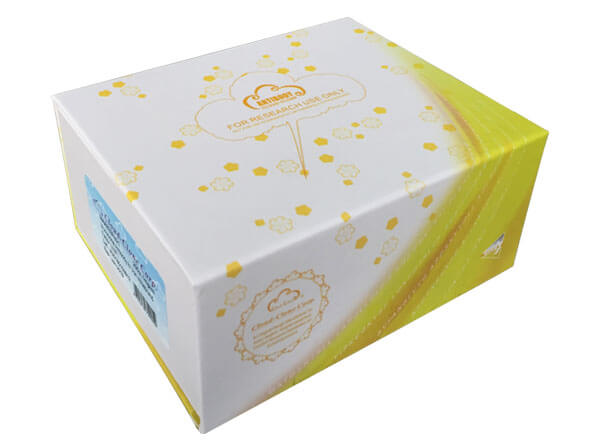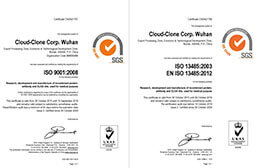Polyclonal Antibody to Osteoprotegerin (OPG)
Cat# PAA108Ga01-200ul
Size : 200ul
Brand : USCN
Polyclonal Antibody to Osteoprotegerin (OPG)
TNFRSF11B; TNFRSF11-B; OCIF; OPG; TR1; Tumor Necrosis Factor Receptor Superfamily Member 11b; Osteoclastogenesis Inhibitory Factor
- Product No.PAA108Ga01
- Organism SpeciesChicken (Gallus) Same name, Different species.
- SourcePolyclonal antibody preparation
- HostRabbit
- Potencyn/a
- Ig Type IgG
- PurificationAntigen-specific affinity chromatography followed by Protein A affinity chromatography
- LabelNone
- Immunogen n/a
- Buffer FormulationPBS, pH7.4, containing 0.02% NaN3, 50% glycerol.
- TraitsLiquid
- Concentration500µg/mL
- Organism Species Moren/a
- ApplicationsWB; IHC; ICC; IP.
If the antibody is used in flow cytometry, please check FCM antibodies. - Download n/a
- UOM 20µl100µl 200µl 1ml 10ml
SPECIFITY of the Polyclonal Antibody to Osteoprotegerin (OPG)
The antibody is a rabbit polyclonal antibody raised against OPG. It has been selected for its ability to recognize OPG in immunohistochemical staining and western blotting.
USAGE of the Polyclonal Antibody to Osteoprotegerin (OPG)
Western blotting: 0.2-2µg/mL;1:250-2500
Immunohistochemistry: 5-20µg/mL;1:25-100
Immunocytochemistry: 5-20µg/mL;1:25-100
Optimal working dilutions must be determined by end user.
STORAGE of the of the Polyclonal Antibody to Osteoprotegerin (OPG)
Store at 4°C for frequent use. Stored at -20°C in a manual defrost freezer for two year without detectable loss of activity. Avoid repeated freeze-thaw cycles.
STABILITY of the Polyclonal Antibody to Osteoprotegerin (OPG)
The thermal stability is described by the loss rate. The loss rate was determined by accelerated thermal degradation test, that is, incubate the protein at 37°C for 48h, and no obvious degradation and precipitation were observed. The loss rate is less than 5% within the expiration date under appropriate storage condition.






